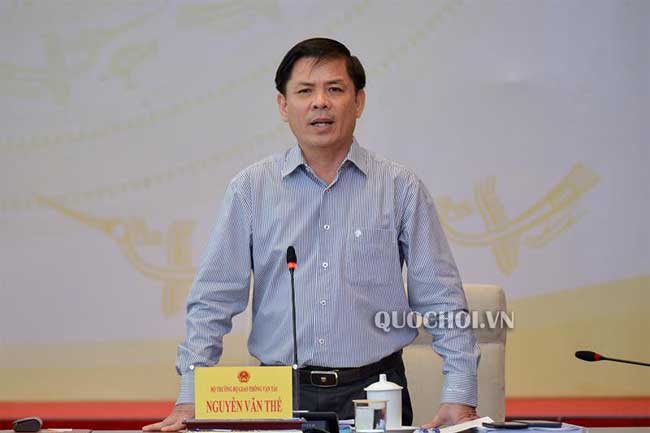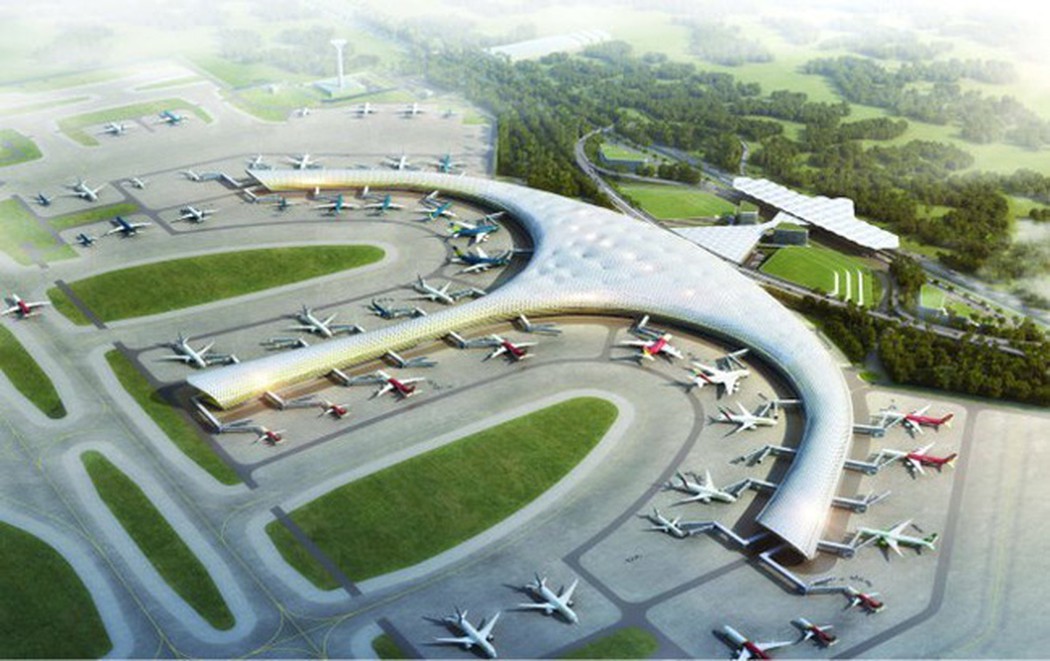
At a meeting of the NA’s Economic Committee on October 14 to consider the feasibility study for the first phase of the big-ticket project, Minister of Transport Nguyen Van The noted that the Government had agreed that ACV should be the investor for the project, the local media reported.
As authorised by the Prime Minister, total investment capital for the construction of Long Thanh International Airport is estimated at VND111.69 trillion (US4.77 billion) in the first phase, according to Minister of Transport Nguyen Van The.
The capital is allocated to cover construction fee, equipment, contingency costs due to price slippage factors, and interest rates, among others, The said at a hearing held by the National Assembly (NA)’s permanent committee on October 17.
During the first phase of the construction, the work items include a runway, a passenger terminal with handling capacity up to 25 million people and a cargo terminal for 1.2 million tons of goods annually, as well as other facilities, said The.
“If the proposal is approved by the NA, construction of the airport can begin in the first quarter of 2021,” said Lai Xuan Thanh, Chairman of ACV.
According to the report, the Government specifically proposed that ACV will invest in the headquarters of management agencies at the airport, the first runway, taxiways, a terminal, an aircraft parking space, other major infrastructure, essential items for the airport and service items at the airport.
The State currently holds 95% of ACV’s charter capital and its ownership is expected to increase to nearly 100% in the coming years. In addition, ACV is managing and operating 21 out of 22 airports nationwide, The said.

ACV’s investments are managed by the Commission for the Management of State Capital at Enterprises. If the ACV becomes the main investor in the airport project, the State can proactively make important decisions to ensure the country’s socioeconomic development and security at the airport.
The minister said ACV will need to raise about 98 trillion VND (4.19 billion USD) for the project. It is set to have 36.6 trillion VND (1.57 billion USD) by 2025, or 37 percent of the investment. It has been working with 12 domestic and international organisations to borrow the remaining at an interest rate of 5-5.5 percent a year with a loan term of 15 years.
According to the Government, the project can use aviation enterprises’ capital, in line with the NA’s Resolution 94/2015/QH13 on the development of the Long Thanh international airport project.
However, under the Bidding Law, competitive tenders must be held for the project. Therefore, the selection of ACV as the investor of the airport must be approved by the NA, according to the Government.
In addition, the Government has also proposed naming the Vietnam Air Traffic Management Corp (VATM) as the investor of the flight control tower and other safety features. VATM would need to raise an estimated 3.22 trillion VND (138.8 million USD) for the purpose.
VATM already has 2.12 trillion VND (91.38 million USD), or 66 percent, of the needed money. VATM would borrow the rest from local credit institutions with an interest rate of 11 percent a year.
“We are confident that we will manage to find enough capital for the project. But there’s still a long road ahead. It will take a long time to invite bids for technical designs of the airport before construction,” he said.
Following the pre-feasibility study of the airport, the construction of the first phase covers an area of 1,165 hectares, while the consultant proposed to expand the area to 1,810 hectares to add a logistics center, cargo station for fast delivery, solar power generation station, a detention basin, among others.
However, the total area for the airport in all phases remains unchanged at 5,000ha as approved by the NA.
At the hearing, the NA’s Economic Commission requested the government to conclude the feasibility study for the second and third phases of the construction, ensuring high competitiveness of Long Thanh Airport compared to others in the region.
Additionally, the commission expressed concern over the government’s ability to meet the deadline for completion by 2025, due to the time-consuming nature of approving technical designs after approving the feasibility study, as well as complicated process of resettlement and compensation.

Speaking at the meeting, Vu Hong Thanh, head of the NA’s Economic Committee, stressed that Long Thanh is a project of national importance.
Thanh expressed concern over the Government’s proposal, questioning whether ACV’s financial capacity would meet the needs of the Long Thanh international airport project while is the firm manages 21 other airports.
In addition, the NA has never before assigned specific enterprises as investors of projects, Thanh added.
The airport was approved by the NA four years ago, but funding has remained a big question, even as construction of the first phase is set to start next year.
Long Thanh International Airport has a total investment capital of VND336.63 trillion (US$16 billion). In November 2017, the NA approved resolution on acquiring land, compensation and supporting resettlement of affected people in the project area with investment capital of nearly VND23 trillion (US$1 billion).
The airport will be built in three phases over three decades, and is expected to become the country’s largest airport.
The first phase is scheduled for completion in 2025, when the new airport will be able to handle 25 million passengers a year.
The next two phases will run from 2030 to 2035 and from 2040 to 2050.
Once completed, it will have an annual capacity of 100 million passengers and five million tonnes of cargo.
The three phases are estimated to cost 5.4 billion USD now, but experts have warned this could double if the project is delayed by five years.
Located 40km to the east of HCM City, Long Thanh airport is expected to relieve overloading at Tan Son Nhat International Airport in HCM City, the country’s largest airport.
The feasilibility report for Long Thanh International Airport was made by Airports Corporation of Vietnam (ACV) with supports from joint venture of JFV (Japan – France – Vietnam), including Japan Airport Consultants (JAC), ADP Ingeniere (ADPi), Nippon Koei (NK), Oriental Consultants Global (OCG).
Consultants responsible for technical design and construction supervision are Airport Design and Construction Consultancy (ADCC) and Transport Engineering Design (TEDI).

















